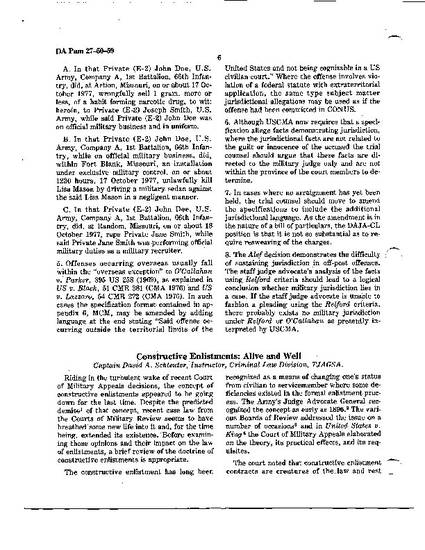
Despite the predicted demise of the doctrine of constructive enlistments, recent case law from the Courts of Military Appeals has extended its existence. The constructive enlistment is recognized as a means of changing one’s status from civilian to servicemember where some deficiencies exist in the formal enlistment process.
In a trio of cases, United States v. Brown, United States v. Catlow, and United States v. Russo, the Court of Military Appeals laid a firm foundation for estopping the government from relying upon constructive enlistments in order to establish in personam court-martial jurisdiction. This trio of cases raised more questions than it answered—a result not atypical where a judicial forum forges new law. Russo’s progeny seems to support the proposition that if a recruiter actively and intentionally smoothes the enlistment path for an individual who is clearly not qualified, the resulting enlistment is defective and the recruiter’s misconduct estops the government from relying upon a constructive enlistment. In United States v. Brown, the failure of the military to discharge the underage recruit was coupled with the actions of the recruiter in arriving at the estoppel theory. The question remains as to what burden of proof must be met by the government in establishing jurisdiction based upon a constructive enlistment.
The concept of constructive enlistments has taken an interesting turn but appears to be alive and well. Whether the Court of Military Appeals accepts the holdings and rationale of the intermediate appellate courts is another question.
